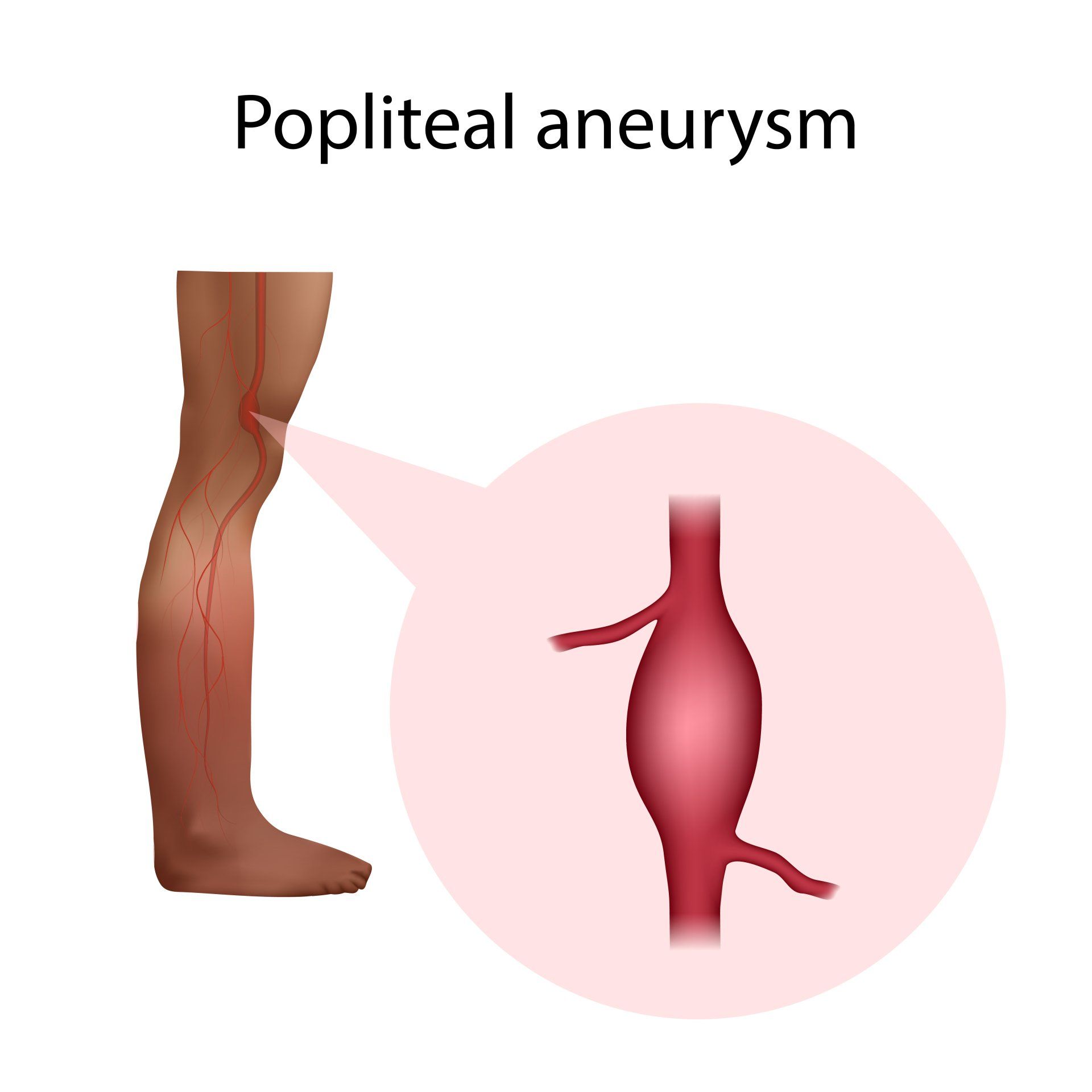Popliteal Artery Aneurysm

An aneurysm occurs when the wall of an artery is weakened as you get older and the artery dilates/expands due to the blood pressure on the wall of the artery.
The popliteal artery is the artery behind your knee. Just like other aneurysms, it can rupture if it becomes very large as the wall becomes thin (like blowing up a balloon). But more worrisome for this type of aneurysm is clot that can form inside of the aneurysm. This clot can completely occlude the artery, or some of the clot can break off and travel to your lower leg and foot. This would be an emergency and might result in need for amputation of the leg. So, it's important to diagnose a popliteal artery aneurysm before it causes symptoms.
Risk factors for this type of aneurysm include a personal history of aneurysms, family history of aneurysms, cigarette smoking, high blood pressure, and high cholesterol.
Symptoms may include a pulsatile mass behind the knee, pain in the leg, or signs of embolization (cold, blue, painful toe or toes) or rupture (sudden, severe pain behind the knee).
Diagnosis is made based on physical exam, ultrasound, and/or CT scan.
Popliteal artery aneurysms can be treated with special covered stents, bypass around the aneurysm, and removing the aneurysm and replacing with vein or artificial vein substitutes.
For more information, contact Paducah Vascular Institute at 9270) 845-4300 to schedule an appointment.


